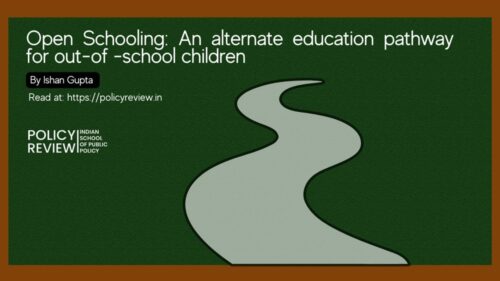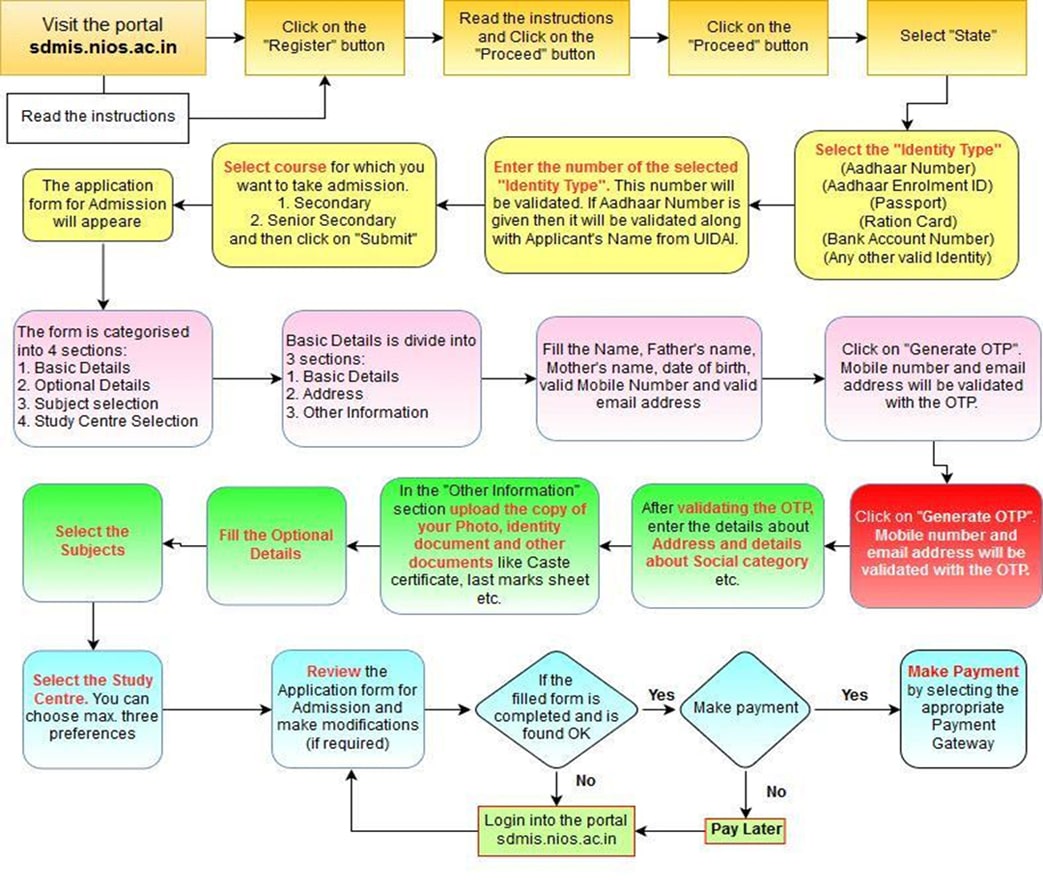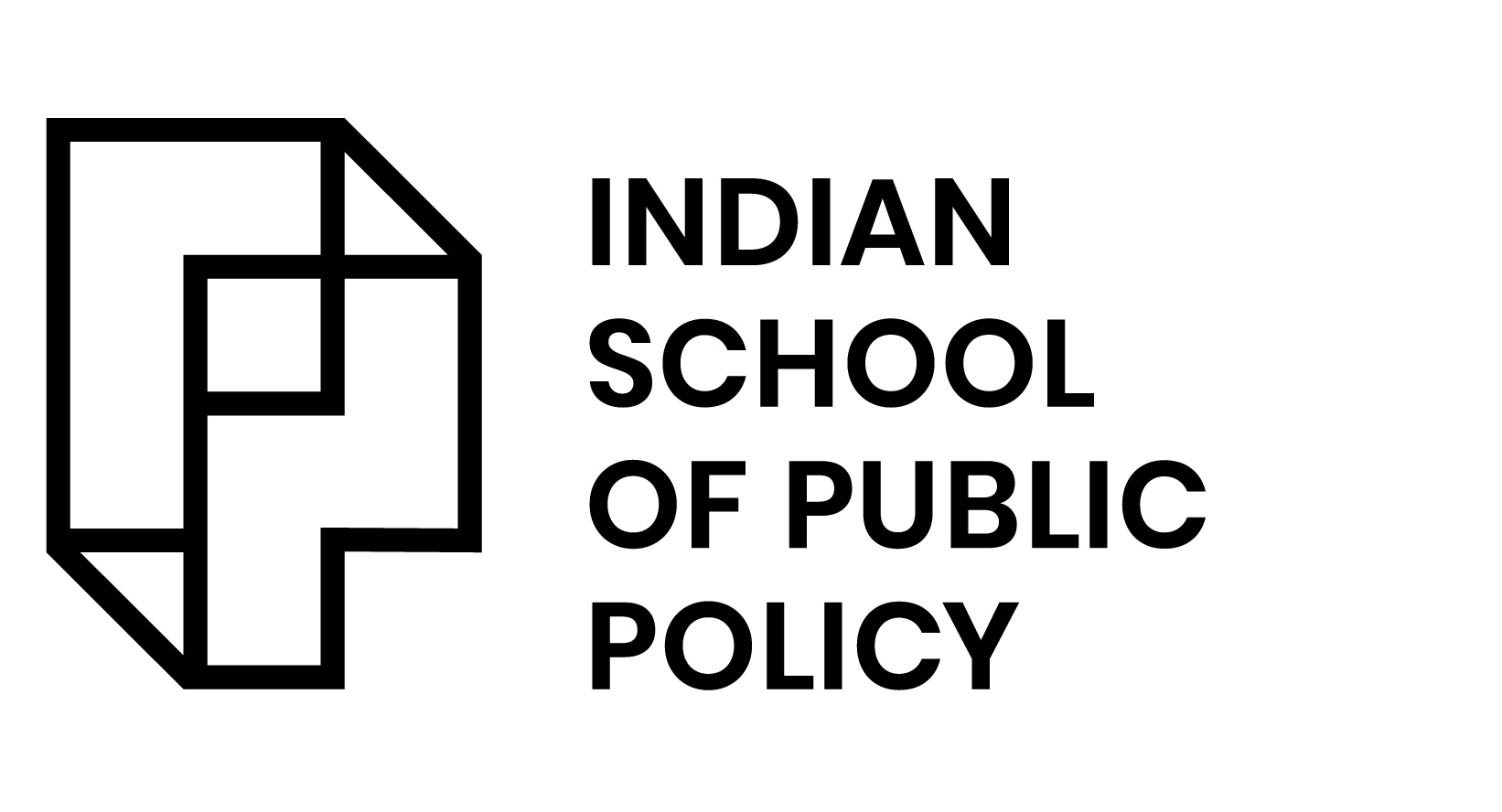
Open Schooling: An alternate education pathway for out-of-school children

India has approximately 30 million out-of-school children (OOSC) between the age of 6 and 17, according to the National Sample Survey (NSS) of households (2018)1. This is roughly equal to the population of Texas in the United States, as per the Census Bureau (2021)2. The OOSC population is concentrated within disadvantaged families due to geographic barriers and socioeconomic factors such as gender, caste, and income, as stated in a 2014 UNESCO report.3
These students may have either never enrolled in schools, dropped out due to the opportunity cost of studying rather than working, or were detained from school due to consistent failure in examinations.4,5 With government schools proposing stringent criteria such as age limits and academic performance in previous grades for admissions, it may be challenging to retain such students within the formal education system.6
To reintegrate the OOSC within the education fold, the Ministry of Human Resource and Development (MHRD), in the New Education Policy (NEP, 2020), recommended strengthening the National Institute of Open Schooling (NIOS)7. The facility of open schools can help solve two significant challenges for OOSC.
First, NIOS grants admissions even if students have failed out of the formal education system or crossed the age limit. Secondly, with pan India availability and ease of access to education resources, NIOS can compensate for inadequate education infrastructure, such as 57% of rural elementary schools having less than four classrooms.8 Moreover, with mass reverse migration from urban to rural areas during the COVID-19 pandemic, the open schooling system can benefit these displaced families by providing consistency in their children’s education.9
Problem: NIOS facility is underutilized.
Even though there are several benefits of open schooling, the enrolment rates are low. The number of NIOS admissions in 2021-22 was around 400,000, and only 30% of the entries were between the ages of 6 and 17.10 This accounts for only 1% of the total OOSC population. Moreover, enrolment in recent years has decreased. For the academic years 2015-16 and 2014-15, nearly 500,000 students registered with NIOS.11 Low enrolment numbers may be due to several factors, out of which two are highlighted below – awareness of NIOS, simplicity of the admissions process, and language barriers.
- There is a lack of awareness about the NIOS system among parents. A survey revealed that some parents who were aware of NIOS learned about it from school teachers rather than print media. Moreover, the study results pointed out low website traffic and the tendency of parents to seek help from agents or coaching centres for information and support.12
- The online admissions process may deter low-income households with no access to the internet or limited digital literacy from enrolling their children. As of 2018, only 24% of Indian households had internet connectivity, and approximately 40% of these surveyed individuals knew how to use the internet.13 While the pandemic nudged people to develop digital literacy, several logistical challenges, such as a lack of stable internet connection and power outages, persisted.14
- Using the English language to explain the admissions process may hinder prospective parents from applying to NIOS. The information about the admission process is only available in English, although only 0.02% of India’s population can speak the language.15 Moreover, the complexity and the steps involved, as shown in Figure 1, may pose a challenge even for English-speaking parents from low-income households.16
Figure 1: Admission process of NIOS

Recommendations to improve the reach of NIOS to all OOSC
- Enrolment drives spearheaded by Bachelor of Education (B.Ed.) students and posters translated into regional languages can provide parents with necessary information about NIOS in a simple, accessible format.
- Since government school teachers may be occupied with administrative duties and teaching, B.Ed. students from state institutions such as the State Council of Educational Research (SCERT) can help generate awareness around open schooling.17 A small stipend can be provided as an incentive, and their participation in enrolment drives can be integrated into their practical curriculum in the final semester.18 Support of B.Ed. students will also reduce parental dependencies on brokers, who exploit them and increase out-of-pocket expenditures.19 This activity, in turn, will help B.Ed. students develop the necessary skills to interact with parents and understand their challenges.
- Placing the information posters in strategic areas, including school walls, bookshops, and community notice boards, can help inform parents about NIOS. Moreover, using vernacular languages will make the information more accessible to parents.
- Leveraging existing institutions, such as internet cafes, rural childcare centres, and Indian postal service centres, to provide digital support for parents.
- Public-private partnerships between local municipalities and internet cafes in urban and semi-urban areas can provide parents with technological support, as anecdotal evidence suggests parents often use internet cafe services for government school admissions-related processes.20
- Existing internet and computer facilities in 1.3 million rural childcare units or Anganwadi Centers (AWCs) and 22000 Post Offices (POs) can support parents with online admissions across remote areas of India.21,22
Some potential bottlenecks in implementing our ideas.
- Training of B.Ed. students and arrangement of stipend for their participation in the enrolment drive: Training of B.Ed students will require time, resources, and capital. Moreover, the training dates would require aligning with the existing class schedule of the students. Arranging stipends may require additional monetary allocation by the state or the central government.
- Lack of resources and staffing at AWCs and POs: There may be a need for more bandwidth at both AWCs and POs as the facilities and staff may be involved in their regular duties. If auxiliary staff and technical resources are deployed, it may incur additional costs to train them to support parents with NIOS admissions. Furthermore, since admissions support will be supplementary to their regular job, monetary compensation may be required as an incentive.
- Data privacy concerns as parents seek the help of internet cafes: Parents from underprivileged backgrounds may not know personal data protection and may be unable to ensure the purging of any sensitive information of their children. It will also be challenging to monitor adherence to data protocols at scale.
Solutions to address these potential bottlenecks.
- Using zoom recordings to train B.Ed. students and allocating the reduced logistics cost towards the stipend.
- Training videos can be recorded on the Zoom video conferencing platform and sent to B.Ed. students at scale.
- Pre-recorded training videos will allow students to pursue resources based on their class schedule and availability.
- No logistic costs will ease the financial burden and pave the way for arranging stipends for B.Ed. students.
- A similar process was followed in Madhya Pradesh as part of the CM Rise teacher professional development program to virtually train 300,000 teachers during the pandemic by using the DIKSHA platform.23
- Identifying local women or Self Help Group members adept with technology and encouraging their support toward AWCs and POs for online admissions.
- Women skilled in technology operations can be selected from Self-Helf Groups (SHGs) or other informal community institutions. These women can be trained and incentivized to contribute towards temporarily staffing the AWCs and POs during the NIOS admission cycles.
- A similar model of SHG involvement was successful in states like Jharkhand in generating awareness around COVID-19 protocols and healthcare facilities, as highlighted in a joint report by the Ministry of Rural Development and other entities like Krea University.24
- Giving actionable items for parents to protect their data
- During enrolment drives, volunteers can tell parents not to provide any original copies of personal documents.
- Moreover, a visual nudge in the form of a small checklist for parents to follow during their visit to the internet cafe can help them remember to purge copies of sensitive information at the internet cafe.
Simple steps to impact the lives of 30 million students.
A scalable change can result from the collaboration of stakeholders, including B.Ed students, community SHGs, and AWC workers. Instead of inventing new techniques to generate awareness around NIOS and simplify the admission process, existing government resources can support parents of OOSCs and increase enrolment rates. These seemingly insignificant steps can be instrumental in shaping the lives of 30 million children in India.
Register your Interest to Study at ISPP
End notes
1 Ministry of Human Resource Development, Government of India. “New Education Policy,” 2020.
2 “U.S. Census Bureau QuickFacts: Texas.” Accessed December 9, 2022.
https://www.census.gov/quickfacts/TX.
3 UNESCO Institute for Statistics. “Global Initiative on Out-of-School Children: A Situational Study of India,” August 2014.
https://www.allinschool.org/media/1866/file/India-OOSCI- Country-Study-2014-en.pdf.
4 National Statistical Office, Ministry of Statistics and Programme Implementation. “NSS Report No.585: Household Social Consumption on Education in India,” 2018.
http://164.100.161.63/sites/default/files/publication_reports/Report_585_75th_round_Education_final_1507_0.pdf.
5</sup >Majumder Srijita, Rai Ambarish. “Withdrawing the No-Detention Policy: Punishing Children for the System’s Failure,”
2019. https://journals.sagepub.com/doi/abs/ 10.1177/0049085719844671.
6 Agarwal, Madhuri. “Retain, Promote or Support: How to Reduce Inequality in Elementary Education,” n.d.
7 Ministry of Human Resource Development, Government of India. “New Education Policy,” 2020.
8 “RAS | Statistics on Elementary School Education in Rural India.” Accessed December 13, 2022. http://ras.org.in/statistics_on_elementary_school_education_in_rural_india.
9 Iyengar, Karthikeyan P., and Vijay Kumar Jain. “COVID-19 and the Plight of Migrants in India.” Postgraduate Medical Journal 97, no. 1149 (July 1, 2021): 471–72. https://doi.org/10.1136/ 9 postgradmedj-2020-138454.
10 NIOS Website. “Age Wise Students,” 2022 2021. https://sdmisadmin.nios.ac.in/auth/age-wise-students.
11 NIOS Website. “Statistical Report: The National Institute of Open Schooling (NIOS),” 2016 2014. https://www.nios.ac.in/statistical-report.aspx.
12 Minni, Puja, Padmaja Pancharatnam, Shobhita Rajgopal, and Jyotsna Jha. “How ‘Open’ Is Open School in India?” n.d., 6.
13 National Statistical Office, Ministry of Statistics and Programme Implementation. “NSS Report No.585: Household Social Consumption on Education in India,” 2018. http:// 164.100.161.63/sites/default/files/publication_reports/Report_585_75th_round_Education_final_1507_0.pdf.
14 Agrawal Swati, Pandit Deepak. “Exploring Challenges of Online Education in COVID Times,” 2022. https://journals.sagepub.com/doi/full/10.1177/2319714520986254.
15 “India – Census of India 2011 – LANGUAGE ATLAS – INDIA.” Accessed December 13, 2022. https://censusindia.gov.in/nada/index.php/catalog/42561. 15 NIOS Website. “Block 1
16 NIOS Admission.” Accessed December 10, 2022. https://dq4kzxd7fbbni.cloudfront.net/static/dist/images/pdf/stream-1/block-1-nios-admission.pdf
17 Aiyar, Yamini, Vincy Davis, Gokulnath Govindan, and Taanya Kapoor. “Rewriting the Grammar of the Education System: Delhi’s Education Reform (A Tale of Creative Resistance and Creative Disruption).” Research on Improving Systems of Education (RISE), November 25, 2021. https://doi.org/10.35489/BSG-RISE-Misc_2021/01.
18 “Course Structure and Syllabus | Official Website of State Council of Educational Research and Training(SCERT), Government of National Capital Terr of Delhi, India.” Accessed December 10, 2022. http://scert.delhi.gov.in/course-structure-and-syllabus.
19 Minni, Puja, Padmaja Pancharatnam, Shobhita Rajgopal, and Jyotsna Jha. “How ‘Open’ Is Open School in India?” n.d., 6.
20 Haseloff, Anikar. “Cybercafés and Their Potential as Community Development Tools in India.” J. Community Informatics 1 (June 6, 2005). https://doi.org/10.15353/joci.v1i3.2032.
21 National Institute of Public Cooperation and Child Development. “BEST PRACTICES IN ANGANWADI SERVICES SCHEME UNDER UMBRELLA ICDS.” Accessed December 10, 2022.
https://www.nipccd.nic.in/file/reports/bestprac.pdf.
22 “Computers and Internet Facilities in Post Offices.” Accessed December 10, 2022.
https://pib.gov.in/newsite/PrintRelease.aspx?relid=86707.
23 “About CM Rise Teacher Professional Development.” Accessed December 13, 2022. http://educationportal.mp.gov.in/CMRISE/Public/About.aspx.
24 Ministry of Rural Development, Aajeevika, IWWAGE, and Krea University. “Community and Institutional Response to COVID-19 in India: Role of Women’s Self-Help Groups and 24National Rural Livelihoods Mission,” October 2020. https://iwwage.org/wp-content/uploads/2020/12/Swayam-Report.pdf.

